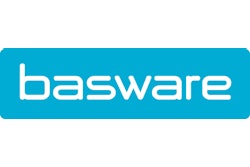
Strong cash flow and easy access to capital is not only critical to a healthy supply chain, but it’s also an important driver of a growing economy. There were many economic challenges over the past few years that impacted supplier relations, but by focusing on best practices, companies can benefit from effective cash and working capital management, and at the same time, improve their relationships with suppliers.
In challenging economic times, companies look for savings wherever they can, but some of these ways can be detrimental to trading partners. For example, if a company pursues short-term gains by negotiating prices too aggressively with smaller suppliers, it may impact its profitability. Another practice, which is employed by some large companies, is to extend payments to their suppliers, sometimes up to 60 to 100 days. This not only strains supplier relations, but it also can have a negative impact on suppliers’ cash flow and potentially jeopardize their financial stability, leading to supply chain risk.
Connected commerce—enabling fast, easy transactions between buyers and sellers—is a better way to capture savings without damaging supplier relationships. It also enables companies to trade across borders without barriers and benefit from efficiencies.
Following are four strategies that companies can use to achieve connected commerce:
- Take advantage of discounts while building better supplier relations. Organizations that automate the invoicing process gain critical visibility into all invoices, payments and suppliers. This enables them to uncover discounting opportunities, such as early payment and volume discounts, as well as streamline the number of suppliers or consolidate business with certain suppliers to negotiate better savings. At the same time, automated systems, along with mobile capabilities, enable them to process invoices more accurately and faster, so they can avoid missing or lost invoices, and late payment fees, as well as facilitate timely payment to suppliers. Supplier portals enable suppliers to see the status of payments, which improves buyer/supplier communication and reduces the volume of calls to accounts payable (AP) departments.
- Engage employees to purchase on-catalog. When employees buy off-catalog, an organization cannot ensure that it is spending according to plan. To counter that, companies are establishing clear policies, directing more spend to preferred suppliers, and encouraging on-catalog spend by making it easy for employees to shop and buy online.
- Conduct e-invoicing. By sending e-invoices through a business commerce network that connects businesses globally, companies can greatly expedite the invoicing process. In contrast to the typical two-week timeframe it takes for invoices to be sent and received, they can now be transmitted immediately through the network. These transparent global commerce networks enable trade to flow between enterprises, while removing barriers between cross-border transactions, for example, by enabling easy handling of different currencies and taxes. Additionally, any issues with suppliers can be addressed on the spot through social capabilities on the networks.
- Free up cash flow with new payment options. When combined with e-invoicing, innovations in payments can boost cash flow for buyers and suppliers alike, and enable small- and medium-sized businesses (SMBs) to reduce their dependence on banks and governments for lending. New solutions are enabling suppliers to get paid when invoices are approved, while extending payment terms for buyers. These new payment options break down barriers to trade and encourage the free flow of commerce.
By implementing these four best practices, companies can achieve the benefits of connected commerce. They’re able not only to transact more freely with trading partners, but they also can operate more efficiently, prevent fraud and identify errors. These companies have better insight into spend, working capital and cash, which they can manage and forecast more effectively. And the benefits continue—connected commerce is a boon for their suppliers, who can get paid on time or even early, reducing the need to borrow capital and enabling them to operate more freely from lending constraints.
The increased cash flow for buyers and suppliers that connected commerce enables leads to greater business agility and innovation—and above all, it stimulates economic growth—a winning combination in any economic environment.
Bob Cohen is vice president for North America at Basware, a provider of cloud-based purchase-to-pay and e-invoicing solutions that enable better buying, selling and connected commerce for organizations around the world.











